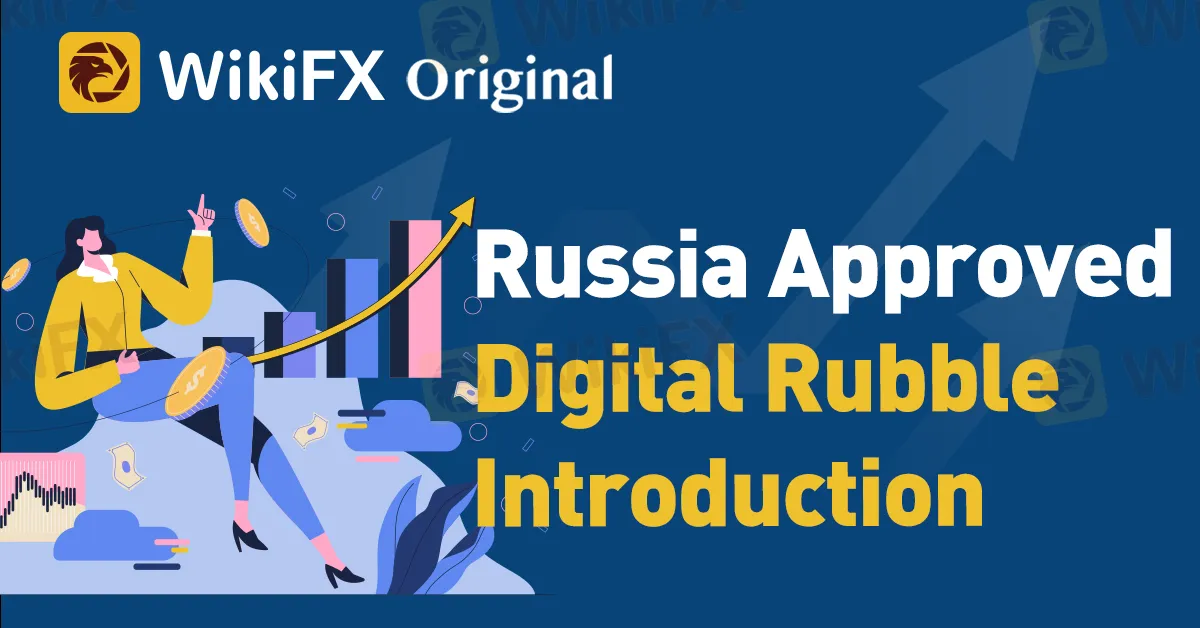简体中文
繁體中文
English
Pусский
日本語
ภาษาไทย
Tiếng Việt
Bahasa Indonesia
Español
हिन्दी
Filippiiniläinen
Français
Deutsch
Português
Türkçe
한국어
العربية
Russia Approved Digital Rubble Introduction
Abstract:Russia takes a significant leap forward in its financial landscape as President Vladimir Putin ratifies the law introducing the digital ruble, the country's central bank digital currency, paving the way for its adoption and testing in real-life transactions next month.

Vladimir Putin, the President of Russia, has given his official approval to a groundbreaking law that paves the way for introducing Russia's central bank digital currency (CBDC), known as the digital ruble.
By amending Russia's Civil Code, President Putin has solidified the status of the digital ruble as a recognized and legitimate form of national currency. The amendments are set to take effect on August 1, 2023. However, some provisions, particularly those concerning bankruptcy and inheritance, will only come into force in August of the following year.
Notably, a pilot testing phase of the digital ruble, originally scheduled for April and previously postponed indefinitely, is now expected to launch next month with the President's official ratification in place. The pilot will collaborate with 13 local banks and explore the practical application of digital currency in real-life transactions.

According to TASS, the state-owned news agency, the new law stipulates that transactions involving digital ruble will be conducted through a specialized information system overseen by the Bank of Russia. Moreover, the central monetary authority will exclusively accept the CBDC for payment and money transfers.
Regarding fees, citizens can make transfers and payments using digital ruble free of charge, while businesses will incur a 0.3% fee, as reported by a local media outlet. However, it's important to note that the law does not make any provisions for the operation of bank accounts solely based on the CBDC.
Addressing concerns about adoption, Elvira Nabiullina, the Governor of the Bank of Russia, assured the public that the government would not impose the digital ruble on its citizens. Instead, it will be a voluntary decision for individuals and businesses to use the CBDC. Nabiullina expressed hope that the digital ruble would prove to be more convenient and cost-effective, presenting new opportunities for the nation.
Russia's progress in developing the digital ruble comes after its quest for an alternative to the international financial messaging system, SWIFT. In response to the country's actions in Ukraine, several Western nations imposed economic sanctions, including the exclusion of certain Russian banks from SWIFT. This has spurred Russia to seek a more independent financial solution, hence its focus on the digital ruble.
With the upcoming launch of the pilot testing phase and the official ratification of the law, Russia is embarking on an innovative journey in digital currencies, presenting potential opportunities and challenges for the nation's financial landscape.

Disclaimer:
The views in this article only represent the author's personal views, and do not constitute investment advice on this platform. This platform does not guarantee the accuracy, completeness and timeliness of the information in the article, and will not be liable for any loss caused by the use of or reliance on the information in the article.
Read more

California Cracks Down on Crypto Scams: 42 Websites Shut Down in $6.5M Bust
California Attorney General Rob Bonta announced earlier this week that the state had taken decisive action against fraudulent cryptocurrency operations. Authorities successfully shut down 42 scam websites responsible for deceiving investors out of at least $6.5 million.

Ripple Secures Dubai License: First Blockchain Payments Provider in DIFC
Ripple gains Dubai regulatory license, becoming the first blockchain payments provider in DIFC, boosting crypto innovation in the UAE.

Why Cryptocurrency is Truly the Future of Trading?
Benjamin Bilski unveils a new crypto platform aiming to solve market inefficiencies, with decentralized liquidity pools and AI-driven trading solutions.

Bitcoin Prince Sam Lee Now Charged with Billion-Dollar Fraud
Once recognised as the Prince of Bitcoin, Sam Lee, who is also the co-founder of Hyperverse and HyperFund, is now charged with a billion-dollar fraud.
WikiFX Broker
Latest News
How to Avoid Risks from Scam Brokers in Forex Investment
Will Trump's Trade Policies Fuel Inflation? BlackRock Warns of Economic Risks
WikiFX "3·15 Forex Rights Protection Day" – Official Release of the Blacklist
Why Scammers Let You Win Before Taking It All
A Must-To-Watch Top Trading Pairs This 2025
Currency Calculator







